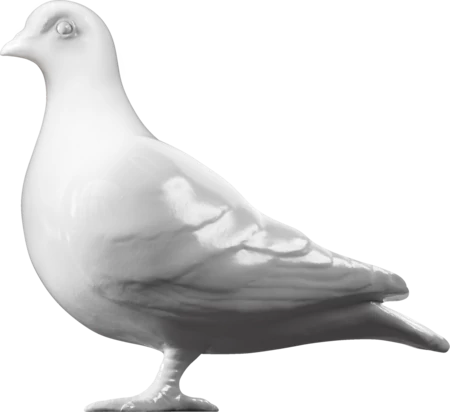Post-Medieval — 1668
Baluster measure, measure
This touch is probably an example of the ‘new’ small touch used by Smith to comply with a Company order on 19th December 1666-7 to ‘everie Spoon maker [to] alter his touch imediately after christmas next from wch tyme all Spoons shall be made exactly to ye Say.” (Welch, 1902, Vol. II, p 135). While it is possible that Smith was already using a small punch before the Great Fire of 1666, Smith’s marks are not recorded on the 1666/7 Touch Plate. The inclusion of the date (16)68 presumably means that the piece either post-dates the Company enactment, or is a rare example of a ‘pre-emptive’ mark, anticipating the need for change and supplying proof of compliance. Date: c. 1668 A letter in the museum’s archives of 6 January, 1974 from the pewter specialist Christopher Peal includes the following statement ‘you have a pewter pint bud baluster (of which I have the fellow quart). These bear a house mark struck several times on the lid of (probably) a chalice, and the triad initials B over BA. …’ Peal was trying to find out if anything further was known about the provenance and if ‘there was a pub suitably named, suitably owned…and if possible when and how it was destroyed.’ Peal’s quart baluster apparently also showed ‘considerable evidence of fire.’ The carefully engraved vessel in the ownership mark is not, however, a chalice, but seems rather to represent a large glass romer or goblet with flaring foot, applied prunts, knopped stem and gadrooned or vertically ribbed bowl of the sort manufactured in London at the Savoy Glasshouse in the late 17th century (see examples in the Museum of London and Victoria & Albert Museum). As yet we have been unable to identify the tavern to which this mark refers. Lillywhite’s entry under London’s glass houses is as follows: ‘A patent was granted by Elizabeth I in 1580 to a Venetian for making glasses in Crutched Friars and “the Friers Hall was made a glass-house” or house wherein were made glasse of diverse sorts to drinke in’. This, and other arrangements had the effect of bringing glass vessels into more general use, in place of horn and pewter. The glass-sellers Company (guild) incorporated by charter in 1664, probably originated in about the middle of the previous century. Several glass houses are known in London … they appear in isolated cases to be a place of refreshment’. Glasshouse Hall on Broad Street was such an establishment visited by Samuel Pepys in 1660 and the Glasshouse at the Savoy (Broad Street) another, described as ‘the New Glashouse’ in 1763.’ (1972, pp 213-214).
- Category:
- Post-Medieval
- Object ID:
- 13583
- Object name:
- baluster measure, measure
- Object type:
- Artist/Maker:
- Smith, Edward
- Related people:
- Related events:
- Related places:
- Production date:
- 1668
- Material:
lead alloy, tin alloy, pewter
- Measurements/duration:
- H 164 mm, W 124 mm, DM (lid) 88 mm (overall)
- Part of:
- —
- On display:
- —
- Record quality:
- 60%
- Part of this object:
- —
- Owner Status & Credit:
Permanent collection
- Copyright holder:
digital image © London Museum
- Image credit:
- —
- Creative commons usage:
- CC BY-NC 4.0
- License this image:
To license this image for commercial use, please contact the London Museum Picture Library.
Tags
Download image file
You are welcome to download and use this image for free under Creative Commons Licence CC BY-NC 4.0.
Credit: London Museum
To licence this image for commercial use please contact the London Museum Picture Library

Download image file
You are welcome to download and use this image for free under Creative Commons Licence CC BY-NC 4.0.
Credit: London Museum
To licence this image for commercial use please contact the London Museum Picture Library

